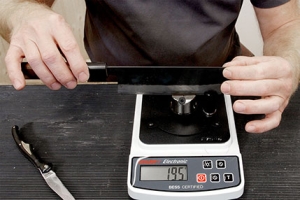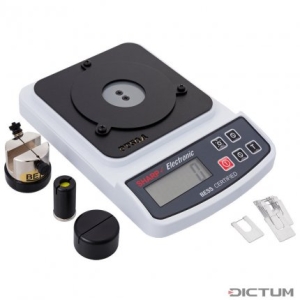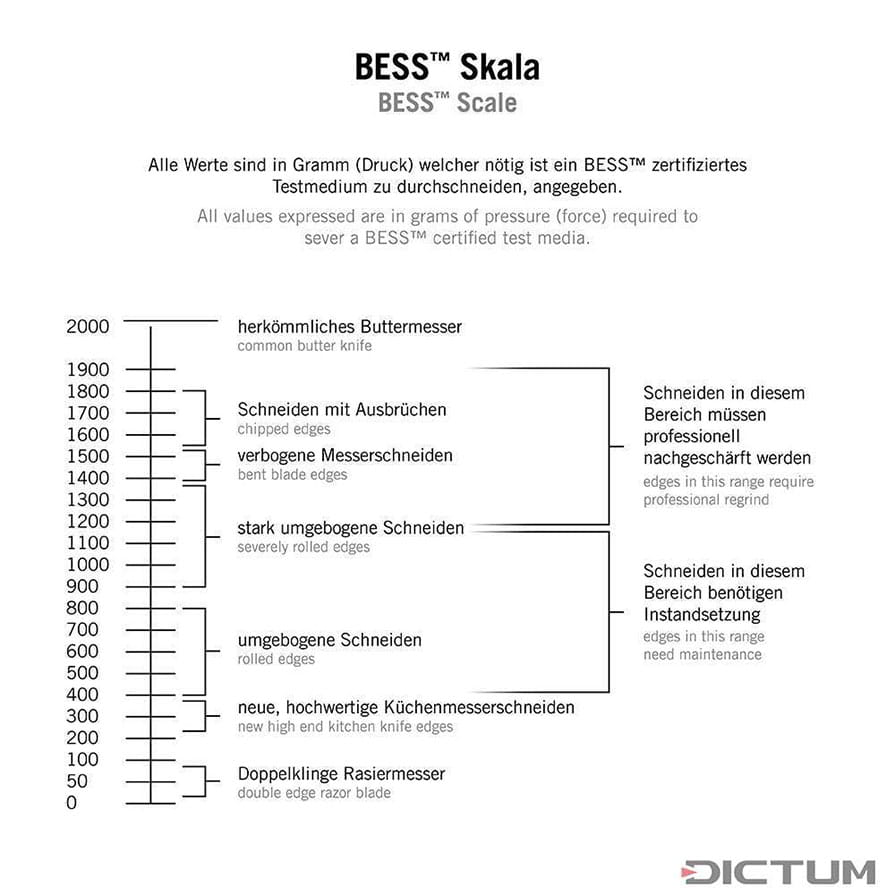Checking sharpening results
The softer the material to be cut, the sharper a blade must be to cut it. That is why the sharpness of Miming – the fabled sword of the Nibelungen from the Germanic saga »Wieland the Smith« – was tested on a felt hat floating in a stream. When it sliced the hat effortlessly, its sharpness was proven. A similar test was performed on a blade created by the legendary Japanese samurai-swordsmith Masamune. According to legend, his sword was placed in a creek where a maple leaf swam around it out of respect for the blade‘s sharpness.
A ripe tomato is perfect for testing a blade‘s sharpness. The ability to slice one without exudation is one of the most veritable tests of a kitchen knife‘s sharpness.
Objective sharpness tests
How can sharpness be quantified?
Mike Brubacher, manufacturer and inventor of Edge-On-Up, also asked himself this question. The result is a measuring method which makes the term »sharpness« scientifically measurable and comparable. The basic principle of the Edge-On-Up Sharp Check is quickly explained:
A standardised test medium, a thin synthetic plastic wire, is clamped into a holder. A kind of »precision scale« measures the pressure (in grams) required during a test cutting process to cut through the measuring wire. The result can be used to objectively evaluate the sharpness using the »
BESS C« scale. By standardising the test medium and the measurement procedure, the Edge-On-Up sharpness tester enables a user-friendly and repeatable method for quantifying sharpness.
The ideal device for knife makers and collectors to evaluate different steels and grinding types, as well as for all sharpeners of tools and knives who want to improve their sharpening results by means of repeatable evaluation.
THE BESS SCALE
The BESS value determined is the maximum weight in grams that was required to cut the test wire. A sharp cutting edge needs less pressure to cut the wire than a blunt one. The higher the BESS value, the duller the blade, or the lower it is, the sharper the blade. Since the values are numerical, they can be compared with each other. For example, a freshly sharpened, double-bevel razor only needs about 50 BESS to cut the wire. The sharpness of a freshly sharpened kitchen knife is between approx. 220 to 380 BESS. If the BESS value exceeds 400, for most knives and tools it means they should be resharpened, unless it is a butter knife, which may have a BESS value of 2000.
Visual cutting edge examination
A simple way to check the sharpening result is an optical cutting edge inspection.
Use a means of optical magnification, for example a magnifying glass or a microscope, and check the cutting edge millimetre by millimetre over its entire length. Remaining burrs, micro nicks or dull spots will be visible. Inexperienced sharpeners especially can quickly improve their own sharpening results by frequently checking the edge and thus learn to work more and more precisely when sharpening.
The Shinwa® Pocket Microscope (No. 717317) is a compact, powerful pocket-sized microscope equipped with LED light. This handy microscope provides high resolution and good definition with 60x-100x magnification even in poor lightning conditions.
A handy Magnifier (No. 717497) with 15x magnification and base guarantees the optimal distance between object and lens, and is therefore perfectly suited for checking knife and tool edges after sharpening. A folding mechanism on the binoculars of the Headband Magnifier (No.730489) makes it possible to switch from 2.2x to 3.3x magnification at any time.







